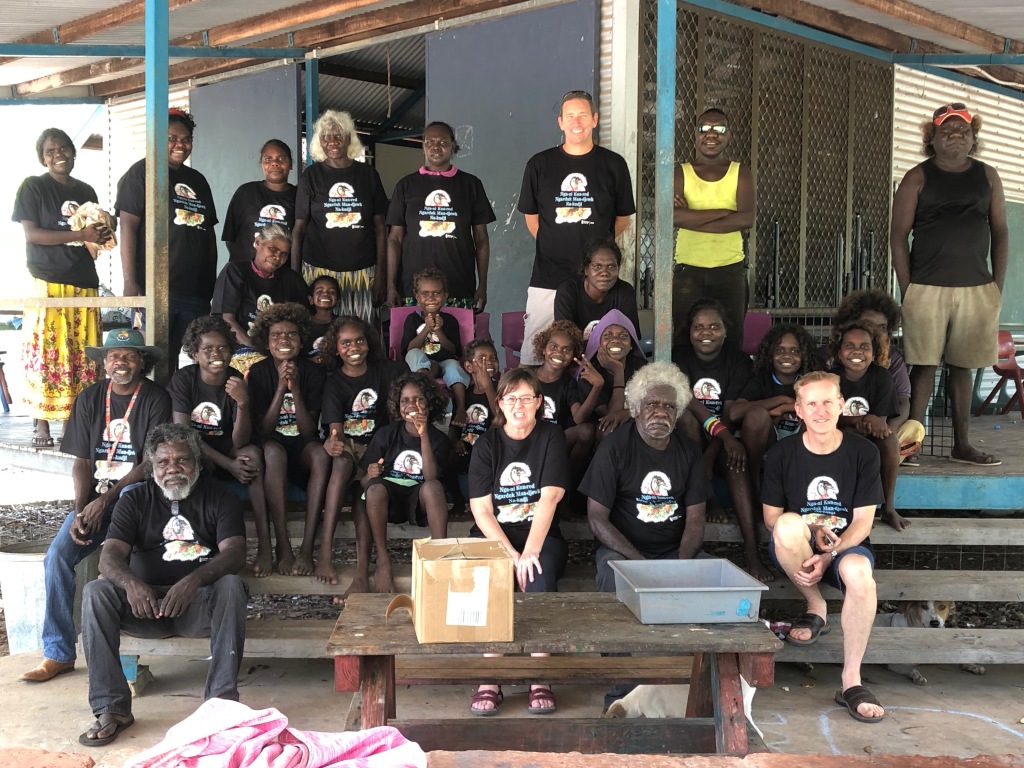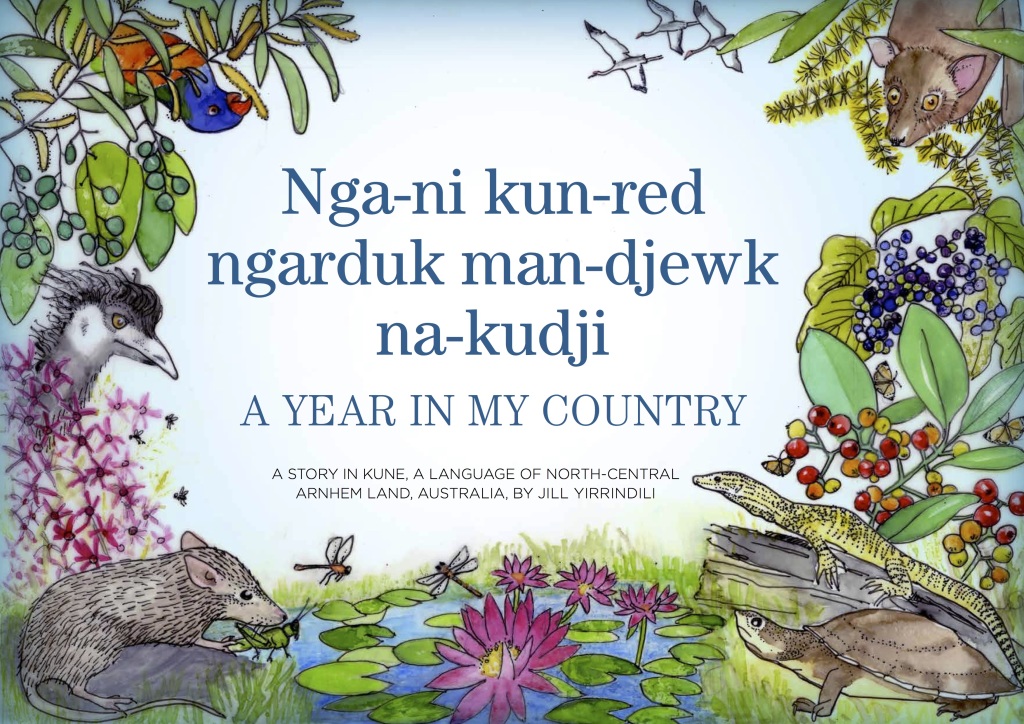The launch of a book in the Kune language (published by Batchelor Press) took place recently at Buluhkaduru outstation. The book is Nga-ni Kun-red Ngarduk Man-djewk Na-kudji 'One Year in my Country'. Text by †Jill Yirrindili, transcribed & translated by Aung Si, illustrated by Jenny Taylor, designed by Christine Bruderlin, edited by Margaret Carew and production support by the Bininj Kunwok Language Project. Everyone looked great in their book cover T-shirts! So many people worked hard to make it a great day. Thanks also to Mason Scholes and Natalie Carey for logistics support.
Nga-ni Kun-red Ngarduk Man-djewk Na-kudji
December 18, 2017 By Filed Under: children's reader, community news story, publication, seasons
Kudjewk dja Bangkerreng
April 8, 2017 By Filed Under: publication, seasons, video
Ngalwakadj Jill Nganjmirra talks in Kunwinjku about the two wet seasons Kudjewk and Bangkerreng and the environmental changes that tell Bininj (Aboriginal people) what foods are available at different times of the year. Key words in Kunwinjku are given as subtitles for the benefit of those learning to read and write in Kunwinjku. The version with English subtitles is below the Kunwinjku screen.
Drawings and voice over by Jill Nganjmirra. Subtitling and video by Andy Peart.
And here's the English subtitled version:
Bonj
That is all.
Manberrk
February 28, 2017 By Filed Under: environment
Karriburdebme Kundjahkorl
February 28, 2017 By Filed Under: environment
Mandjurlukkumarlba
February 2, 2017 By Filed Under: cultural text, plants, vocabulary
'In the wet season we get mandjurlukkumarlba berries.'
It's now the season for mandjurlukkumarlba berries (Antidesma ghaesembila). In Kuninjku they are called mandjurlukkurn. In Kundjeyhmi they are called andjurlukkumarlba and in Kune they are djurlukkurn.
Kuninjku people near Mumeka like to get these berries at this time of year at Bilindje on the Mumeka to Maningrida road on the Tomkinson flood plain.
The plant also has a nickname called kunjkurlba which means 'kangaroo blood'. That's because the old people used to use the juice as part of kangaroo sorcery to hunt kangaroos. They sprayed the juice on to kangaroo tracks on the ground and eventually the legs of the kangaroos would become arthritic and lock up, making it easier to spear them.
Learn about your local foods, learn how to say their names, look after them.
photos by Gary Fox
bonj
that is all




